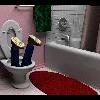Do I Go Microtech Or E-manage Ultimate?
Announcements
-
Similar Content
-
Latest Posts
-
Yeah that's what I figured too....that or the compressor gets very dizzy
-
Hose's can't possibly stay connected from a non-rotating frame of reference that is not on the axle axis. Even if you put some slip joints into the stationary end of it, it would be 3s before it bound up and twisted itself into a pretzel.
-
Does that hose stay connected while driving? 😮 That setup wouldn't last in 4WD life, ha ha. I'm just picturing how many people would cut those hoses too if it were on a 4WD parked at Woolworths, ha ha! Yes, tHere's lots of grubs in society.
-
There's actually quite a bit of aftermarket for automatic/manual tyre deflater/inflater systems ... many will have seen YT vids of trucks on tropical forest roads (read: mud), with air lines leading from the chassis/bed down to a hub piece, which in turn connects to the tyre valves ...most of the time only used on the drive axles, to adjust tyre pressures and get some grip....(bit like letting air out of a 4WD to get traction on loose dirt/sand)...
-
I believe Unimog is the only vehicle that has it (from the manufacturer). I haven't seen aftermarket permanently connected kits, but I haven't looked either.
-





Recommended Posts
Create an account or sign in to comment
You need to be a member in order to leave a comment
Create an account
Sign up for a new account in our community. It's easy!
Register a new accountSign in
Already have an account? Sign in here.
Sign In Now